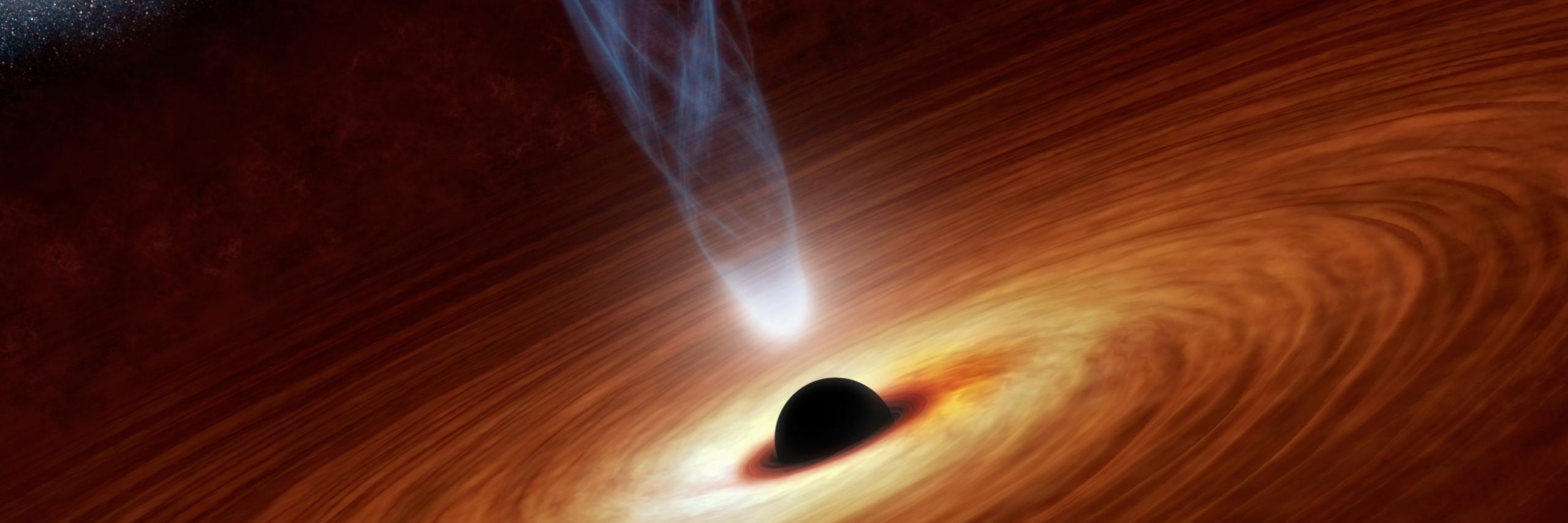A black hole sits at the centre of a quasar, one of the brightest objects in the universe. Image source: NASA/JPL-Caltech.
A team of international researchers led by experts at the Australian National University (ANU) have discovered a black hole 12 billion light-years away.
Growing at the equivalent of one sun every day, it is the fastest-expanding black hole ever recorded.
The black hole’s mass is estimated to be 17 billon times that of our local Sun.
The black hole currently exists at the centre of a massive quasar.
A quasar is the core of a galaxy that swirls around a supermassive black hole, feeding it constantly as the velocity of its own spin continually generates light and wind speeds of a few thousand kilometres per second.
J0529-435, as it is named, is currently the brightest known object in the universe, and its accretion disc- the storm cell of material waiting to be consumed- is seven light-years in diameter. This is around 1.5 times the distance from our solar system to Alpha Centauri, our nearest star.
The quasar was detected through a 2.3 metre telescope at the ANU Siding Spring Observatory near Coonabarabran in NSW.
Though the quasar can’t be seen by the naked eye, it can be seen with telescopes that have a lens at least the size of a basketball.
Christian Wolf, Lead author and associate professor at ANU, discussed how the black hole was creating matter from the environment, and consuming its quasar to do so.
He noted that the scientific community’s understanding of black holes is limited, with whatever may be inside currently unknown.
“Physicists describe black holes as entities that only have two properties: mass and rotation. Mass and rotation are the only things we can possibly measure — everything else is unknown. What’s inside, it doesn’t show in any way,” he said.
“This black hole eats as much mass in a single day as there is in our entire solar system – the Sun and all the planets combined.
“The accretion disk is so massive and dense and hot that it starts glowing brightly, and that’s the light that we see.
“It’s a lot of light that comes out of that accretion disk, about 500 trillion times the amount of light that our Sun emits, or about 20,000 times the amount of light that our entire Milky Way galaxy – with all its billions of stars – emits.”
Dr Wolf mentioned J0529-435 was difficult to find, stating “there’s lots of stars out there, very few of them are black holes.”





